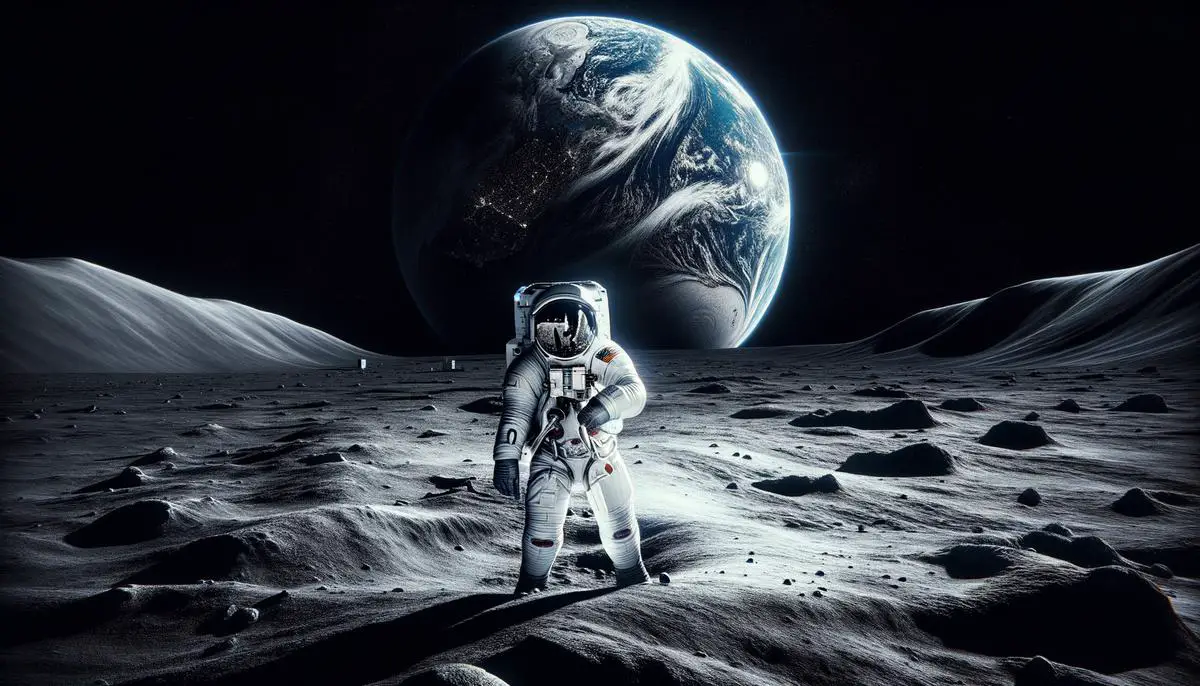Gazing up at the Moon from Earth, one might not fully grasp the stark differences that define its environment. The absence of an atmosphere, the perpetual darkness of its sky, and the bright, barren landscape create a visual and emotional experience unlike any other. As astronauts recount their journeys, they offer us a glimpse into the profound nature of lunar exploration.
The Black Sky of the Moon
On the Moon, astronauts' view of a pitch-black sky starkly contrasts with Earth's blue daytime sky. This dark sky phenomenon emerges due to the absence of an atmosphere on the Moon. On Earth, our atmosphere scatters sunlight, resulting in the familiar blue sky we see during the day. Without this atmospheric scattering on the lunar surface, even during the day, the sky remains an impenetrable black canvas.
Buzz Aldrin's iconic moonwalk gave us not just a historic footprint, but also insight into this lunar backdrop. There, the ground beneath the astronauts was brightly lit, while above, the cosmos stretched out in endless darkness. This stark contrast in lighting helps to appreciate the otherworldly aspects of Moon exploration.
Astronauts had an exceptional view from their lunar module and during their explorations outside it. Earth appeared larger and more dominant in the Moon's sky compared to how the Moon looks from Earth. This giant 'blue marble' floated against the pitch-black background, providing a contrast that left many astronauts in awe of our planet's beauty.
Stars, typically shrouded from our view during the day on Earth, remained visible on the lunar surface. Their light, unhindered by atmospheric particles, shone clearly against the darkness. However, the bright lunar surface sometimes made these stars less prominent, akin to trying to identify constellations from a well-lit city street.
The lack of atmospheric interference allowed astronauts to experience the cosmos in a way that's impossible from Earth. Lunar explorers often described the visual experience as a unique combination of the bright, barren Moon juxtaposed with the consistently midnight black sky.
Everyday tasks, like fixing equipment or walking, allowed astronauts to further grasp the unique visual landscape around them. The pitch-black sky served as a constant reminder of space's vastness and the isolation of their position. As they moved about in their moon suits, the illuminated terrain sharply contrasted against the inky backdrop.
Through their accounts and photographs, we've gained a window into this extraordinary perspective. The perpetual darkness of the Moon's sky, even during lunar daytime, remains a testament to the unique environmental conditions that shape our universe's observable dance.
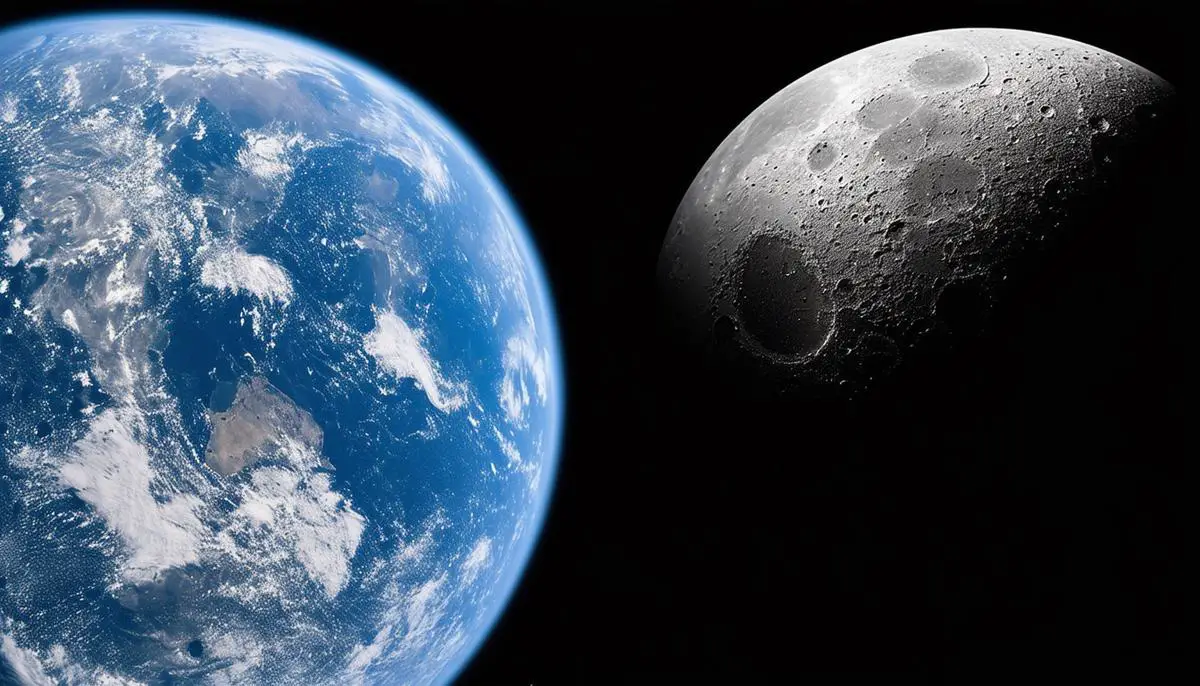
Earth from the Moon
Astronauts gazing at Earth from the Moon were treated to an astonishing sight. From their lunar standpoint, Earth appears significantly larger and more prominent than the Moon does from Earth. This is due to the relative sizes and distances involved: Earth is nearly four times the diameter of the Moon, presenting as an impressive blue and white marble floating against the pitch-black backdrop of space.
To these spacefarers, seeing Earth in its entirety brings a striking sense of perspective. The clear detail of continents, swirling cloud patterns, and the deep blue oceans contrast vividly with the monochrome lunar terrain. This view often evokes a sense of fragility and unity, encapsulating the entirety of human existence in one small globe.
The emotional impact of this sight is significant. For many astronauts, the experience of seeing Earth from the Moon has been described as life-altering. It underscores the isolation of their current position and the interconnectedness of everything they've left behind. The realization that all of human history and every living being occupies that small space can be both humbling and awe-inspiring.
"We came all this way to explore the Moon, and the most important thing is that we discovered the Earth." – Bill Anders, NASA astronaut
This iconic image, showing Earth rising above the lunar horizon, brought home the beauty and delicacy of our planet, emphasizing the need to cherish and protect our only home.
The psychological effects of this vantage point are profound. The view of Earth from such a distant perspective often instills a sense of responsibility and a deeper appreciation for the planet's ecosystem. This phenomenon, often referred to as the "Overview Effect," engenders a shift in the astronauts' worldview, promoting a sense of global citizenship and a collective consciousness about the stewardship of Earth.
Returning astronauts frequently recount how this view solidified their commitment to environmental protection and international cooperation. It serves as a powerful reminder of our planet's uniqueness in the vast expanse of space. The combination of beauty, isolation, and the realization of Earth's finite nature often leaves a lasting impression long after their return to terrestrial life.
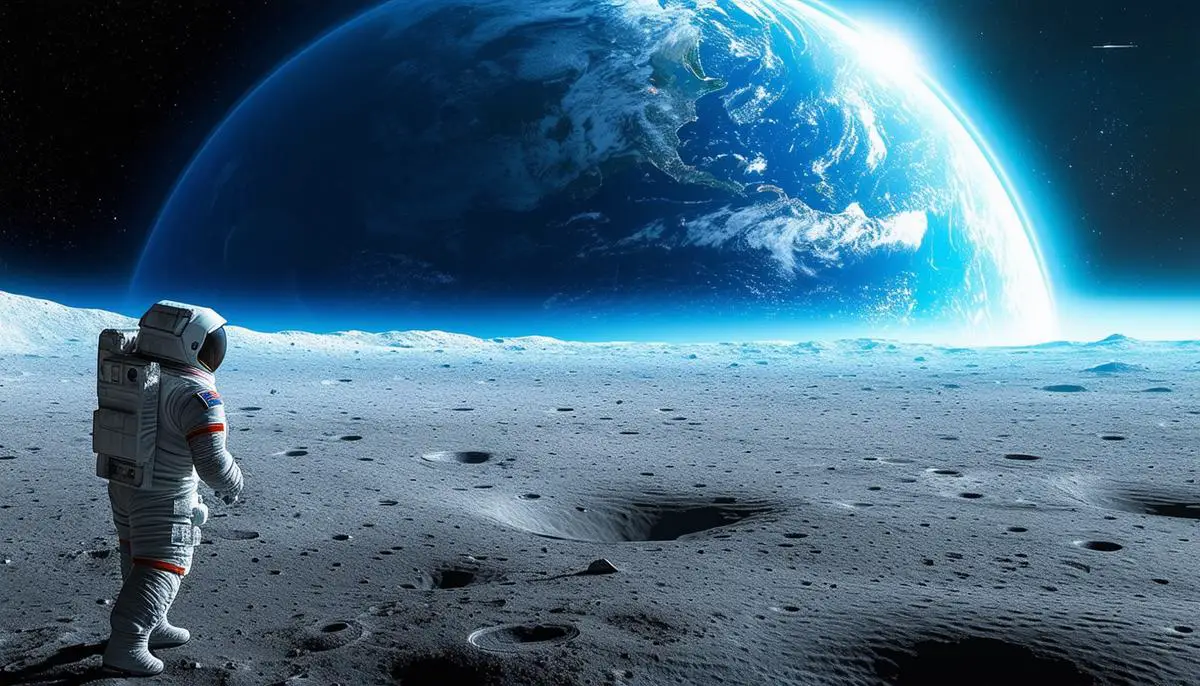
Visibility of Stars and Other Celestial Bodies
Gazing up from the Moon, astronauts encounter a celestial display unparalleled on Earth, offering an unfiltered view of stars, planets, and galaxies. In the absence of an atmosphere, there's nothing to diffuse or obscure the light from these distant objects. This means that, in theory, stargazing from the lunar surface should be exceptional.
However, the reality is more nuanced. The brightness of the Moon's surface, strongly illuminated by the Sun, can impact the visibility of stars. Much like how it's difficult to see stars in a city with its bright lights, the reflective lunar regolith can wash out the fainter points of light.
Several astronauts have noted this effect. During their lunar missions, their primary objectives were focused on mission-critical tasks rather than stargazing. When they did have a moment to glance upward, many found that the stark contrast between the brightly lit lunar surface and the black sky made it challenging to spot fainter stars.
Conditions Affecting Star Visibility on the Moon:
- Shadows cast by the lunar module or craters
- Lunar twilight phases
- Reduced glare from the sunlit surface
Viewing planets from the Moon provides its own set of visuals. Without the atmospheric distortion that plagues terrestrial observations, planets appear steadier and more pinpoint. Brighter planets like Venus, Jupiter, and Saturn, which are often visible to the naked eye from Earth, could be seen more clearly from the lunar perspective.
The vastness of space becomes even more pronounced on the Moon, where everything from distant galaxies to nearby stars presents itself against an unbroken void. The galactic core, when visible, is particularly striking, a dense, luminous region that underscores our place within the Milky Way.
Such observations serve scientific purposes too. Precise star sightings assist astronauts in navigation and position checks, enriching our understanding of celestial mechanics. Reflecting on these experiences, astronauts highlight both the practical aspects and the emotional resonance of observing the universe from a vantage absent of atmospheric constraints.
The celestial views from the Moon are a testament to the purity and unblemished beauty of space, an experience that leaves astronauts with memories and insights that go beyond the scientific, touching on the deeply philosophical and existential. Our quest to explore the lunar surface offers not only practical advancements but also a deeper connection to the universe that surrounds us, enriching our collective human experience.
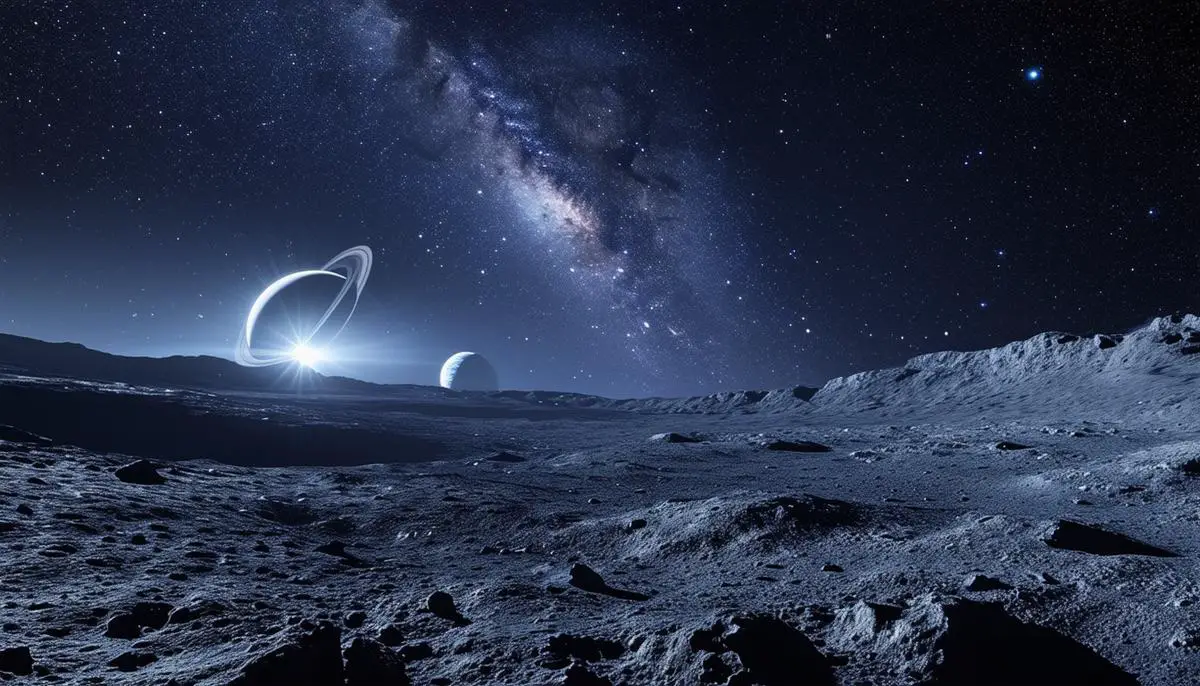
The Surreal Experience of the Lunar Landscape
The stark contrast between the bright lunar surface and the deep black sky evokes a surreal atmosphere for astronauts. The vast, cratered expanse of the lunar surface, gleaming under the unfiltered sunlight, is a startling spectacle of raw, untouched beauty. Against this background, the sky remains an undisturbed canvas of pitch-black, devoid of an atmosphere that could scatter light and create the colors we are accustomed to on Earth.
Astronauts frequently describe the initial disorientation that accompanies this setting. The overwhelming brightness of the lunar surface, due to its highly reflective regolith, juxtaposed with the infinite darkness of space, creates a visual boundary that feels almost palpable. This extreme contrast defies everyday terrestrial experiences, which are moderated by Earth's atmosphere and varied lighting conditions.
Walking on the Moon, with each step kicking up clouds of fine lunar dust, astronauts encounter a surface that is both firm and delicate. The dust, clinging to spacesuits and equipment, reflects the intense sunlight, adding to the luminescence of the landscape. The contrast of light and shadow is stark, with no atmospheric haze or twilight to soften the lines. Shadows appear incredibly sharp and defined, with objects in shadow almost vanishing into the blackness—a phenomenon that further accentuates the alien quality of the environment.
Emotional and Psychological Impacts:
- Exhilaration: Chance to traverse untouched terrain
- Vulnerability: Isolation in a vast, alien environment
- Awe: Witnessing the beauty of ancient lunar features
- Reflection: Deep contemplation on life and existence
NASA astronaut Alan Bean, who walked on the Moon during the Apollo 12 mission, described it as an "astonishing, dreamlike landscape that was both beautiful and forbidding." This sense of otherworldliness is enhanced by the unique physical sensations induced by lunar gravity, which is only one-sixth of Earth's. Movements are exaggerated, steps are bounding, and jumps cover significant distances, making even basic locomotion feel extraordinary.
Psychologically, astronauts often report an intense awareness of their surroundings and a heightened sense of presence. The stark terrain coupled with the knowledge of being utterly alone on a celestial body where no life exists profoundly affects the human psyche. This environment fosters a deep reflection on Earth, life, and our place in the universe. Many astronauts return with a renewed appreciation for the interconnectedness and fragility of life on our home planet, often echoing a collective sentiment of stewardship and conservation.
The alien quality of the lunar landscape is also magnified by the silence that pervades it. Absent of an atmosphere, there is no sound transmission—only the noises generated within the confines of the astronauts' suits and communication devices. This profound silence intensifies the feeling of isolation and otherworldliness.
Through vivid descriptions and personal reflections, astronauts bring this surreal lunar experience back to those of us Earthbound. Their accounts provide glimpses into the complex interplay of environmental extremes, emotional insights, and psychological transformations encountered on the Moon. These narratives not only enrich our understanding of space exploration but also enhance our appreciation of the unique challenges faced by those who venture beyond our home planet.
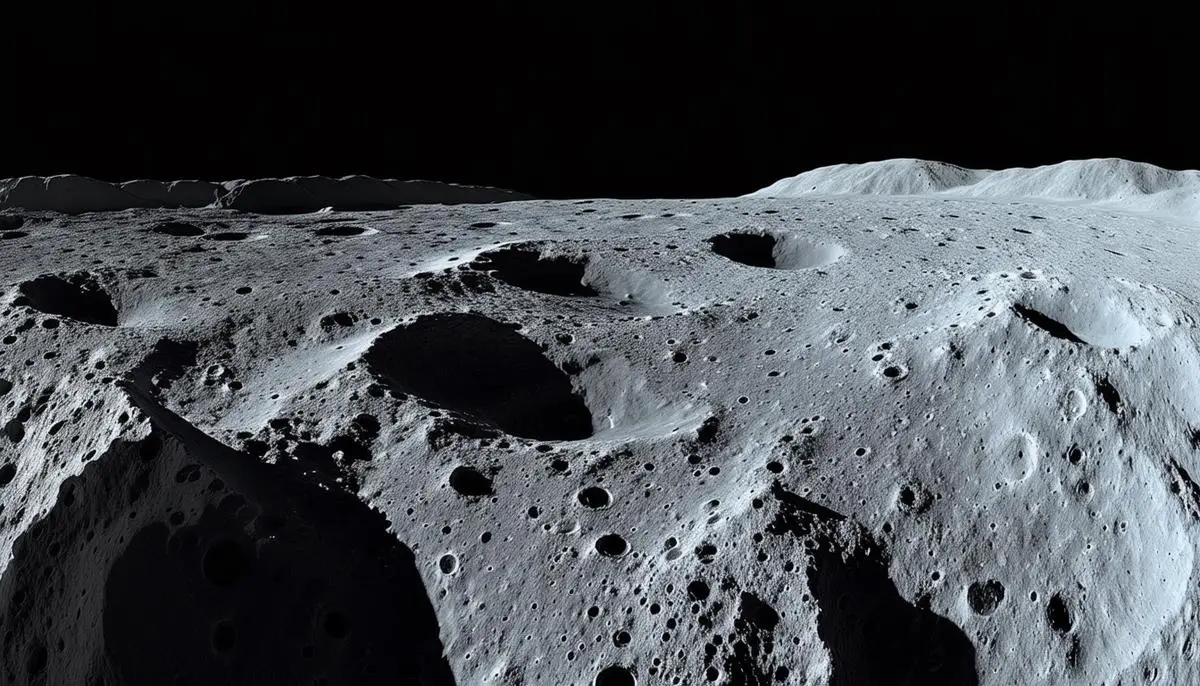
Challenges and Adaptations in Lunar Exploration
Lunar exploration presents numerous physical and technical challenges that astronauts must overcome:
- Reduced gravity: Approximately one-sixth that of Earth, significantly impacts the human body, affecting muscle and bone density.
- Abrasive lunar dust: Clings to equipment, potentially causing malfunctions.
- Limited resources: Requires careful management of food, water, and equipment.
- Psychological stress: Isolation and confinement in an extreme environment.
To counteract the effects of reduced gravity, astronauts engage in rigorous exercise routines both before and during missions, using specially designed equipment that functions in low gravity1.
The lunar environment demands constant vigilance. Astronauts must regularly inspect, clean, and repair their gear to ensure proper functioning. They are trained extensively on Earth to handle a wide range of maintenance tasks, simulating lunar conditions to prepare for unexpected situations.
Daily Life Adaptations
- Food preparation: Dehydrated and pre-packaged meals
- Hydration: Careful monitoring and maintenance
- Sleep: Specially designed sleeping bags and secure anchoring
The psychological impact of long-duration missions in isolated, confined environments is crucial. Astronauts must cope with monotony and isolation while maintaining mental acuity and emotional stability. Regular communication with family, psychological counseling, and team-building activities are essential for mental health support.
"The Earth is the cradle of humanity, but mankind cannot stay in the cradle forever." – Konstantin Tsiolkovsky
Technological innovations play a pivotal role in addressing these challenges. Advanced space suits, improved habitat modules, and potential 3D printing of tools and spare parts on the lunar surface could revolutionize how maintenance and repairs are conducted, making lunar missions more self-sustaining2.
In conclusion, successful lunar exploration requires a complex blend of physical fitness, technical prowess, psychological resilience, and technological innovation. Through careful preparation, continuous adaptation, and relentless innovation, we move closer to unlocking the full potential of human presence on the Moon, paving the way for deeper space exploration.
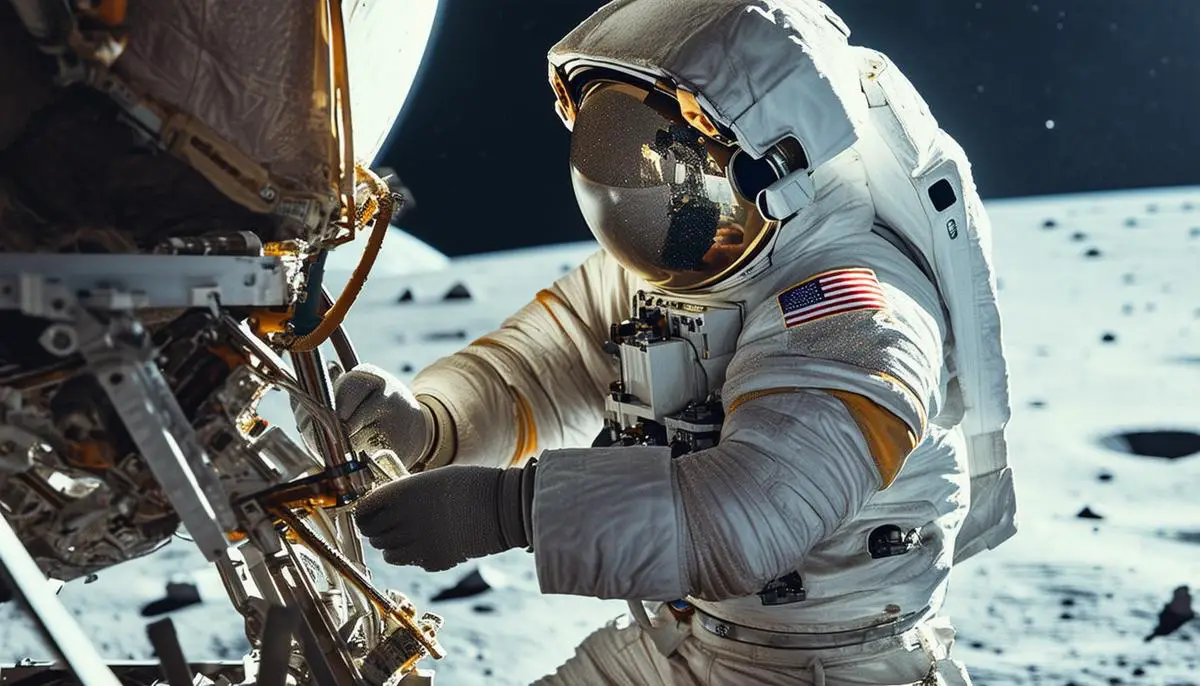
The view of Earth from the Moon serves as a powerful reminder of our planet's fragility and beauty. This perspective highlights the achievements of space travel and reinforces our connection to our home planet. Through their experiences, astronauts return with a renewed appreciation for our place in the universe and the importance of preserving Earth.
This unique vantage point, often referred to as the "Overview Effect", has profound psychological impacts on astronauts3:
- Heightened environmental awareness
- Increased sense of global unity
- Shifted perspective on human conflicts
- Deepened appreciation for Earth's uniqueness
As we continue to explore the Moon and beyond, this transformative view of our home planet may inspire future generations to approach global challenges with a more unified and sustainable mindset.
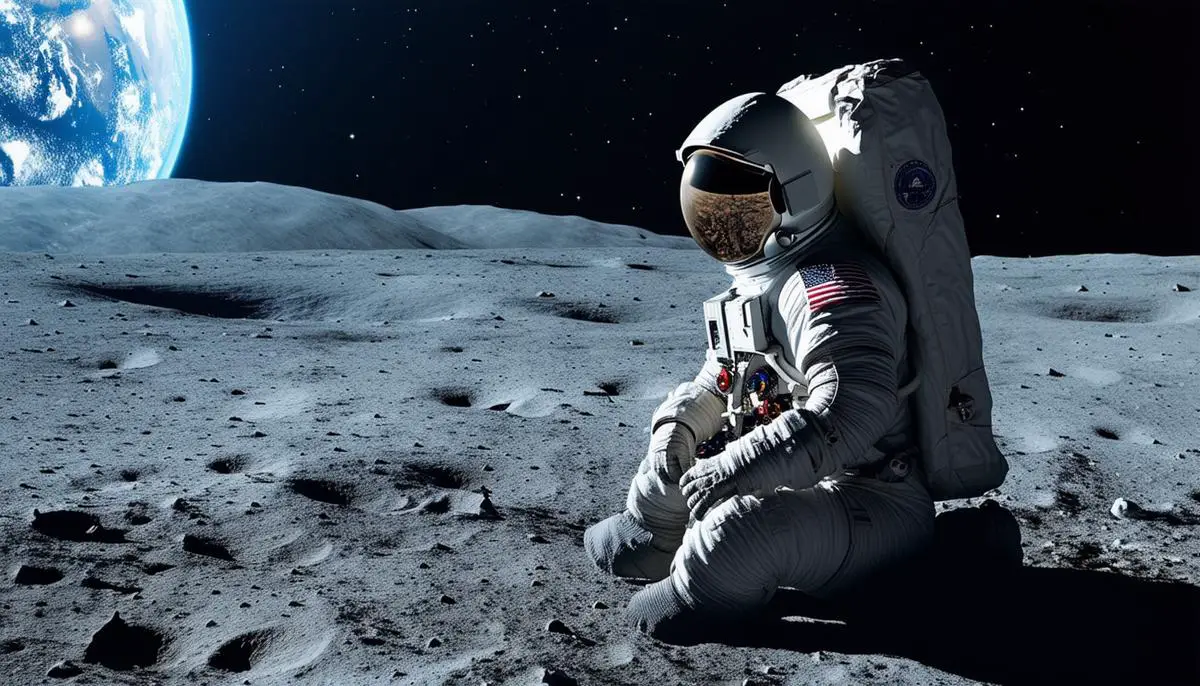
![]()
